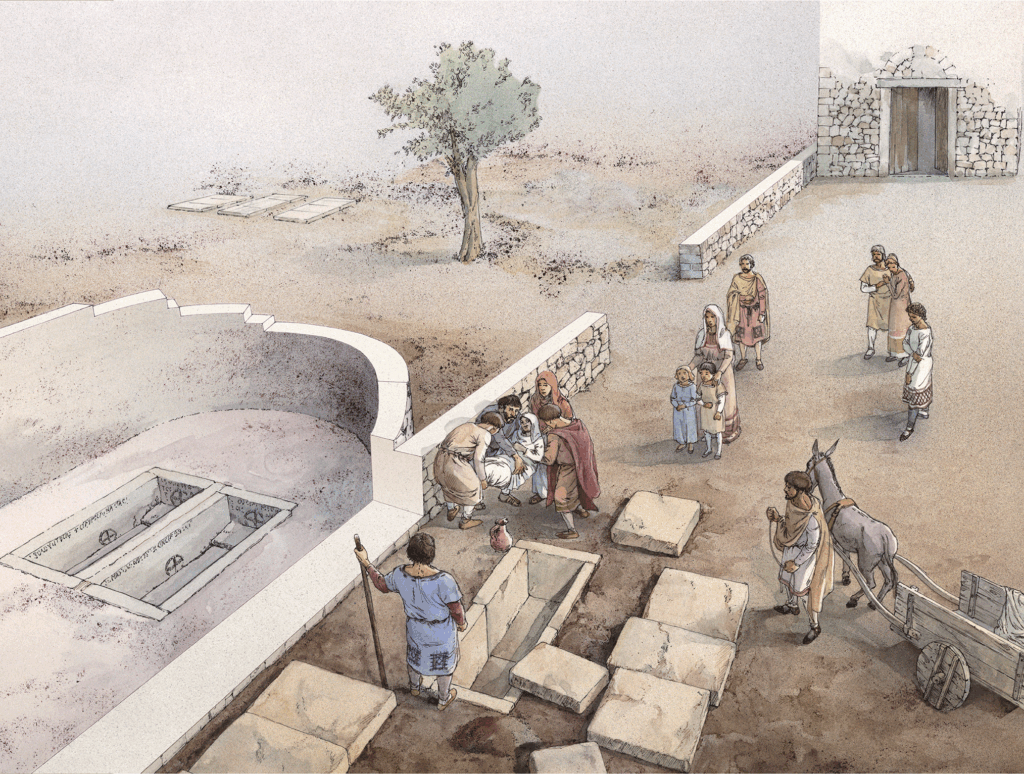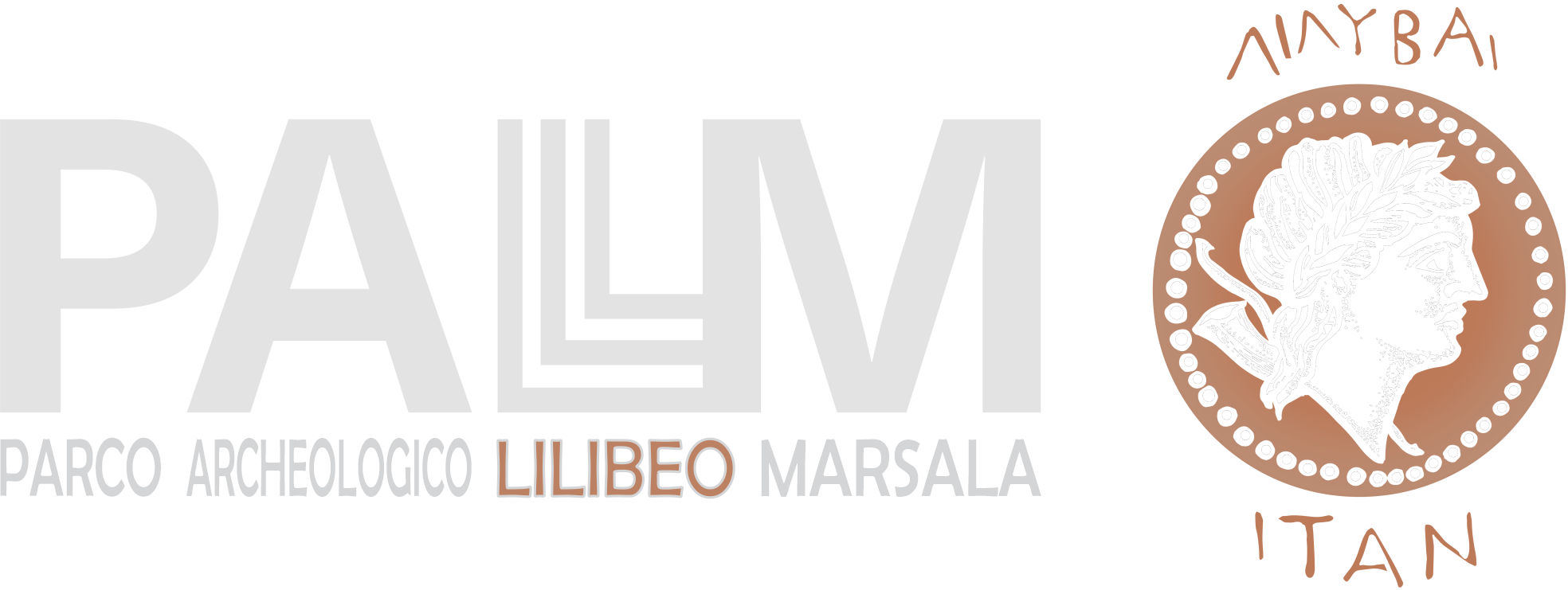LA STRADA IN EPOCA BIZANTINA


🇬🇧 A hypothetical reconstruction of a burial rite in the Byzantine Age
🇮🇹 LA STRADA IN EPOCA BIZANTINA
Tra il V e il VII sec. d.C., la Plateia “Aelia” di Lilibeo viene destinata ad una funzione funeraria, totalmente opposta a quella originaria di importante arteria cittadina.
Sulla strada venne costruita una chiesa con abside che occupava in larghezza l’intera carreggiata della strada, le lastre pavimentali furono obliterate da numerosi piani di calpestio in terra battuta che determinarono la cancellazione definitiva del percorso viario di epoca romana.
I defunti erano sepolti entro tombe a lastre di calcarenite, avvolti in un sudario e accompagnati da una brocca di ceramica o, raramente, di vetro.
Nella stessa necropoli fu edificato un piccolo mausoleo absidato per custodire due sepolture di particolare importanza.
Si tratta di tombe a fossa con pareti interne rivestite di lastre e piano d’appoggio sul banco roccioso. Le pareti delle sepolture sono intonacate e dipinte in rosso con il simbolo della croce iscritta entro un cerchio e iscrizioni in greco che esaltano la croce come strumento di salvezza e resurrezione.
Le due sepolture, sulla base dei dati epigrafici e stratigrafici, si datano tra la seconda meta del VI-inizi VII secolo d.C.
Tomba A
“Oh Dio, abbi pieta di noi peccatori!
Croce speranza dei cristiani
Croce rovina del diavolo
Croce risurrezione dei cristiani.”
Tomba B
“Oh Dio, abbi pieta di noi peccatori!
Croce cacciata dei demoni
Croce arma invincibile
Croce vita per quanti credono,
morte per quanti non credono.”
🇬🇧 THE ROMAN IMPERIAL STREET
Between the 5th and 7th centuries AD, the Plateia “Aelia” of Lilybaeum became a burial site, the exact apposite of its originai active function in daily life.
A church with an apse was built and occupied the entire width of the carriageway of the road; the paving stones were covered aver by numerous layers of rammed earth, which led to the complete cancellation of the earlier monumental Roman road. Wrapped in a shroud, the dead were buried in tombs made of limestone slabs and a ceramic vase, or more rarely a glass one, would be placed beside them.
In the same necropolis there was a small mausoleum with an apse containing two tombs tombs of particular importance. These are graves with inner walls covered by slabs and the base on the rock. The walls of the burials are plastered and painted in red with the symbol of the cross inscribed within a circle and inscriptions in Greek that exalt the cross as an instrument of salvation and resurrection.
The two burials are dated between the second haif of the 6th – early 7th century AD, based on epigraphic and stratigraphic data.
Tomb A
“Oh God, have mercy on us sinners!
Cross, hope of the Christians
Cross, fall of the Devii
Cross, resurrection of the Christians”
Tomb B
“Oh God, have mercy on us sinners!
Cross, casting out Demons
Cross, invincible weapon
Cross, life for those who believe,
but death for those who do not believe”
